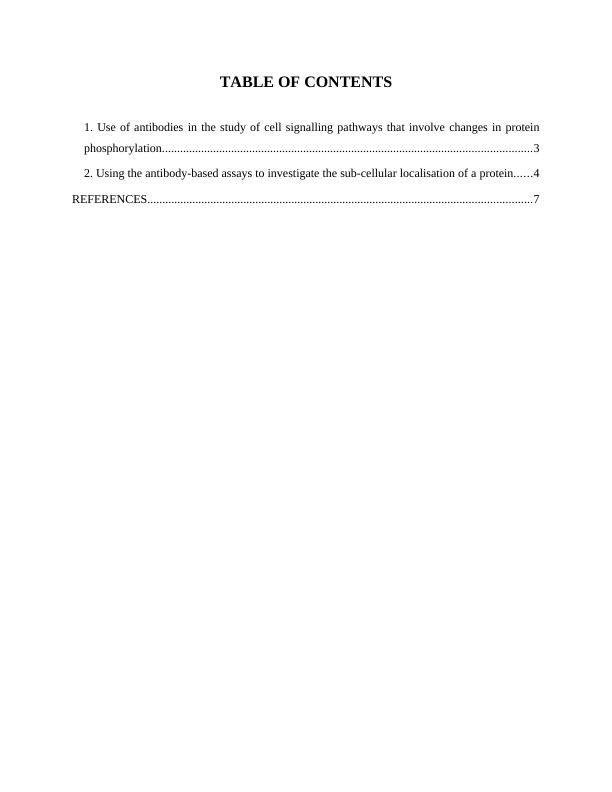Use of Antibodies in Cell Signalling Pathways
8 Pages1945 Words1 Views
Added on 2022-12-29
About This Document
This document discusses the use of antibodies in studying cell signalling pathways that involve changes in protein phosphorylation. It explains the role of antibodies in identifying and neutralizing foreign objects, as well as their importance in regulating cell processes. The document also highlights the potential of antibodies in disease treatment and the limitations of their use.
Use of Antibodies in Cell Signalling Pathways
Added on 2022-12-29
ShareRelated Documents
End of preview
Want to access all the pages? Upload your documents or become a member.
EPIDERMAL GROWTH FACTOR (EGF) RECEPTOR SIGNALING AND CANCER Introduction
|8
|1282
|335
HER-2 Positive Breast Cancer
|16
|4060
|499
Distinct Roles of STAT3 and STAT5 in Breast Cancer Pathogenesis and Therapy
|16
|4672
|486
Analysis of Drug Tyrosine Kinase Inhibitor
|13
|3297
|57
Test for Colon Cancer Assignment 2022
|6
|1242
|6
Intestinal Cell Proliferation and Differentiation
|4
|791
|217



